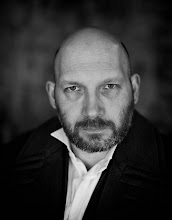 At its best, science fiction holds up a mirror to society and even the most workmanlike speculative fiction can often be reflective of the times in which it was written.
At its best, science fiction holds up a mirror to society and even the most workmanlike speculative fiction can often be reflective of the times in which it was written.Norman Spinrad’s 1967 novel, The Men In The Jungle, is anything but workmanlike, but as a reflection of the time in which it was written it is arguably one of the most accomplished novels of the late 1960’s.
In many ways, The Men In The Jungle, is a reflection of the horrors of the Vietnam War, concerned as it is with a brutal guerrilla conflict that takes place – mostly – in the titular jungle.
The jungle in question is on Sangre (Spanish for Blood, rather significantly) an earth-like planet dominated by the sadistic, narcissistic and perverse Brotherhood of Pain who have created a system whereby any member of the population who isn’t a Brother (or one of their sinister ubermen soldiers, the Killers) is dubbed and treated as an Animal.
For the Brotherhood of Pain life is simple – give pain, receive pleasure, kill or be killed, eat or be eaten – and this simplicity finds its best expression in the routine torture, death and cannibalism that is a fact of everyday life on Sangre. Since meat is scarce and the local population of semi-intelligent insects, or Bugs, are inedible, the Brotherhood’s solution to the protein crisis is almost Swiftian in its concept. Children – or meatanimals – are bred for docility and plumpness, women bred for desirability, while the Killers are bred for viciousness, loyalty and a love of blood and death. Eugenics taken to its most extreme form – Josef Mengele would have been a fully paid up member of the Brotherhood.
Into this nightmare world comes earthman Bart Fraden, formerly President of the Asteroid Belt Free State and a fugitive from terrestrial (in)justice. Along with his mistress Sophia and long-time fellow-traveller and military genius, Wilhelm Vanderling, Fraden sees a high revolutionary potential in Sangre and, since he is a President without a world, sets in motion a plan to overthrow the Brotherhood and set himself up as ruler.
However, he has reckoned without the centuries of slavery, obedience and rigid adherence to The Natural Order which governs not only the actions but the very soul of Sangre and finds that the revolution simply will not come, televised or not.
What follows is a study of a man desperate for power at any price but equally desperate to hold onto his humanity in the face of mounting atrocity and barbarism. In many ways Spinrad’s central theme in The Men In The Jungle is ‘does the end justify the means?’ and with its unflinching portrayal of violence explores this theme in a graphic and often unsettling way:
“Foam flecked the Killer’s lips, turned scarlet as they gnawed their own lips in a howling rage. They tore into the guerrillas like living buzz saws, bashed heads like so many watermelons with their morningstars. They kicked, stomped with their heavily booted feet, shrieked like fiends gone mad. And there, incredibly, a Killer sunk his razor-sharp teeth into a human throat, bright blood gurgling over his face and shoulders as he hands tore gobbets of flesh from arms and torsos. Another Killer clutched at a man’s face with both hands, ripped features away like a bloody Halloween mask. Here a guerrilla was down, and a Killer stomped his neck while another sunk his teeth in a leg and a third smashed the man’s rib cage with his Morningstar.”
As an exercise in straightforward pulp extremes, The Men In The Jungle is a supremely entertaining novel but – like his later masterpiece The Iron Dream – the pulp sensibility is merely a mask to cover deeper and more significant issues. The politics of power and corruption, the Stalinist notions that ‘one death is a tragedy, one million deaths is a statistic’ and the central core of the novel, can one act in an inhuman manner and yet still retain one’s humanity?
As the novel becomes more and more extreme, climaxing in the horrific Pain Day celebrations which ultimately destroy not only the Brotherhood but the soul of Sangre itself, Fraden’s inner journey becomes equally extreme as do the philosophical questions which the novel raises.
Although in many ways a resolutely 60’s novel, The Men In The Jungle is one of those few SF works that manages to remain relevant, perhaps more so than ever. The Vietnam parallels of the 1960’s echo equally as powerfully when placed in the context of Cambodia, Yugoslavia and the current war and occupation in Iraq.
Visionary rather than prophetic, The Men in the Jungle shows Spinrad’s early mastery of the tropes of SF, and equally his ability to subvert those tropes for his own ends.





